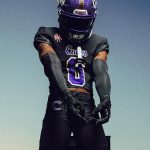Following up on a respectable first quarter that saw revenues boosted by strength from football and hockey equipment, Easton-Bell Sports, Inc. reverted back to the red for the second quarter on struggling team sports sales.
The Van Nuys, CA-based sporting good manufacturer reported double-digit weakness in revenues for the quarter on a 23.8% plunge from its team sports segment, which fell to $110.8 million from $132.3 million in the year-ago period. Management said the team segment suffered from a decline in sales of baseball and softball bats, a decline in football equipment and the effect of a stronger dollar on hockey sales in Canada and Europe.
In a conference call with analysts, Easton management said high-margin baseball and softball bats had taken a significant hit in the quarter as consumers continued to trade down for more conservatively priced diamond sports equipment. Operating profit in the team segment fell to $37.9 million compared to $57.1 million a year ago, impacted by a higher consumer concentration on mid and lower price points, closeout sales of baseball and softball equipment, higher sourced finished goods costs, and the stronger dollar.
To combat slipping diamond sports sales and cater to a more conservative consumer base, Easton recently released the Matrix line of bats, which management said was priced in the more moderate $199-$399 range and have been “received favorably” in the market. Easton also released the Natural Elite glove line, which is priced between $69 and $79 and is seeing positive sell-through at the big-box level.
Easton-Bell’s action sports segment slipped 2.3% to $86.5 million from $88.5 million a year ago as soft demand for high-end bicycles resulted in a drop in sales of cycling components in the OEM market.
Management added that a decrease in sales of power sports helmets was partially offset by increasing sales of snow sports helmets and the success of the company’s recently introduced cycling glove line within its Giro brand. Cycling helmets and accessories were relatively flat overall. Profits for the action sports segment slid to $22.5 million from $24.3 million due to consumer trade-down, sales of product purchased prior to renegotiating supplier prices, closeout sales of obsolete inventory and the stronger dollar.
Inventories were up $24.3 million as of the end of the quarter, with the increase offset by a $19.3 million spike in accounts payable as the company continues to focus on vendor leverage to finance a piece of its working capital. The inventory increase was primarily due to Easton’s football, cycling and hockey businesses.
While the company doesn’t issue forward-looking estimates, CFO Mark Tripp noted a contingency plan the company has initiated to protect against potential sales declines. The plan involves the company taking further steps to address a growing consumer segment that is trading down in price points.














